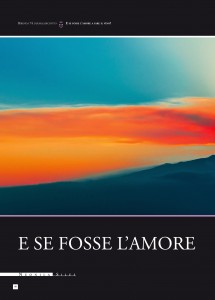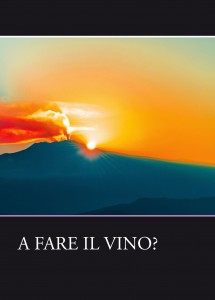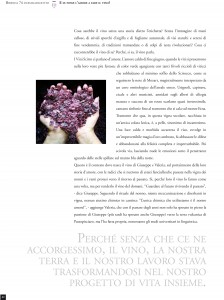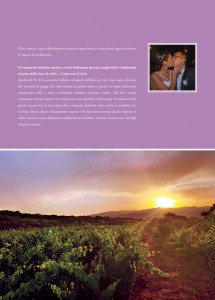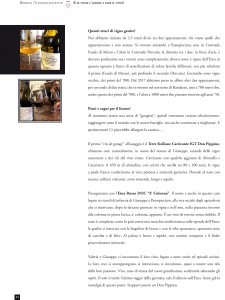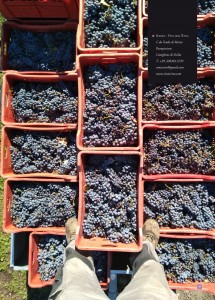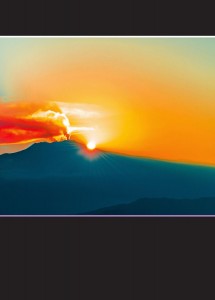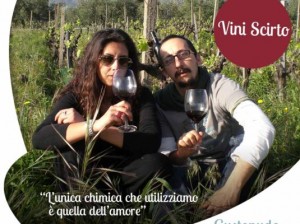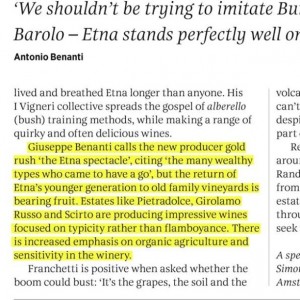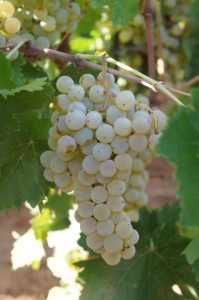
Archivi categoria: Senza categoria

UN BICCHIERE CON: VINI SCIRTO
http://gustonudofestival.com/wp-content/uploads/2017/04/Format-aziende_Vini-Scirto_FACEBOOK-535×400.jpg
UN BICCHIERE CON: VINI SCIRTO
Qual è la storia di Vini Scirto?
“L’azienda apparteneva ai nonni di Giuseppe che hanno sempre prodotto vino e olio, che venivano venduti rigorosamente sfusi. Quando il nonno di Giuseppe è morto, era il periodo in cui tutti, sull’Etna, vendevano i vigneti… E noi, invece, controcorrente, abbiamo deciso di non vendere e di iniziare a lavorare le vigne, spinti anche e soprattutto dal fatto che per Giuseppe hanno un grande valore affettivo, visto che sin da piccolo ci trascorreva tutte le estati insieme a suo nonno aiutandolo nei lavori…. Così nel 2009 abbiamo iniziato a lavorare in vigna, come il nonno ci ha insegnato e la 2010 è stata la nostra prima annata ad andare in bottiglia”.
Che vini fate?
“Le vigne sono centenarie e i vitigni sono nerello mascalese, nerello cappuccio (bacca rossa), carricante, catarratto, minnella e grecanico (bacca bianca): tutti vitigni autoctoni. Produciamo 3 etichette: un bianco, blend di tutte le uve a bacca bianca che si chiama Don Pippinu (in ricordo del nonno); due Etna Rosso, provenienti da due contrade diverse, che si chiamano Don Pippinu e A’ Culonna. Abbiamo completamente bandito la chimica sia dai terreni che dalla cantina… L’unica chimica che utilizziamo è quella dell’amore!”.
Che vuol dire per voi essere vignaioli eretici?
“Essere vignaioli eretici per noi vuol dire essere corretti in un mondo scorretto. Vuol dire essere onesti, prima di tutto con noi stessi. Vuol dire essere coscienti che siamo solo i custodi di questa terra per il breve tempo del nostro passaggio. Vuol dire pensare a chi verrà dopo di noi”.
Tre aggettivi per descrivere i vostri vini.
“Artigianali. Naturali. Sinceri”.
Il Vulcano, sassolini neri … racconti di vetri … ceneri … Il Nerello Mescalese, l’Etna e la sua “gente”
Scirto … anche qui a passeggiare nelle vigne incredulo, annusando la terra, mentre Valeria e Marco dietro a raccontarsi il territorio … con Giuseppe a raccogliere l’eredità del nonno … immagini di un tempo che fu ed ora lo è davanti a me … immagino il bambino che mano nella mano con il nonno raccoglieva profumi …

Bottiglie uniche , unica la vigna , unici gli occhi ad incontrarsi … il 2011 nerello mescalese vinificato in altra “sede” … guardiano un amico comune … morbidezze e facilità di beve incredibili in un vino che non racconta di artificiosità, di gomma arabica ed osmosi inversa ma di raccolte “umane” … il solo vivere la vigna ogni giorno ed aspettare il frutto “pronto
di Roberto Orciani
VINI SCIRTO, I VINI DELL’AMORE
Ogni storia si svolge come un gomitolo di spago, inesorabile inizia da un capo e continua fino all’altro.
La littorina da Randazzo andava per 8 Km fino a Passopisciaro, attraversando assolate distese a viti e ulivi tra i massi neri di pietra lavica; ad aspettare alla stazione il piccolo Giuseppe c’era nonno Pippinu.
Era arrivata l’estate, e come ogni anno l’avrebbe trascorsa in campagna dai nonni paterni, condividendo le attenzioni per i piccoli alberelli dai frutti a grappolo, e ascoltando le saggezze vignaiole in piazza de a’ Culonna.
Inizia lì la storia di Vini Scirto, vini naturali dall’impronta dei tempi passati, vini che non sarebbero tali e, forse neanche mai nati, senza le emozioni che oltre trent’anni fa, nonno Pippinu seppe trasmettere a Giuseppe Scirto
continua…
http://www.arcimboldonews.it/2016/07/vini-scirto-i-vini-dellamore/
https://www.facebook.com/angelamerollawinefood/
Our Italians: Giuseppe and Valeria of Vini Scirto
Today we meet Giuseppe Scirto and Valeria Franco the owners and wine makers of Vini Scirto. Giuseppe and Valeria invited us to their farmhouse for a home-cooked Sunday lunch where we were fortunate enough to spend time talking, eating and sharing life stories. Vini Scirto is located in the beautiful Etna zone of Sicily, which is rich in Sicilian wine traditions.

by Gina Tringali | Jun 29, 2015 | CasaMia, Interview, Sicily, Travel, Wine
Leggi Tutto… http://www.italyfoodandwinetours.com/vini-scirto/
VINI SCIRTO: PASSIONI CONDIVISE.
VINI SCIRTO: PASSIONI CONDIVISE.

C’erano un nonno e suo nipote fermi davanti “a culonna” di Passopisciaro: aspettavano che i forestieri si fermassero per vender loro vino sfuso dell’Etna. Si facevano grandi affari ai tempi. Tutte le ore con la schiena china nella vigna ripagavano in denaro e soddisfazioni…..
LEGGI TUTTO
http://www.naturalfoodandwine.com/index.php/articoli/Vini-Scirto:-passioni-condivise.
http://www.naturalfoodandwine.com/index.php/rubriche/Scrusciu
Marzia Scala


“Scirto Wine Etna reach the sea bay Giardini Naxos”
Don Pippinu 2010 bianco Carricante in blend con altre ottime uve bianche tipiche Etna di Vini Scirto vini naturali.
A L’acquario Degustazione
More: www.albaretna.com
Some like it hot
Some like it hot
A 130-year-old vineyard is like a 90-year-old person,”
By Gina Tringali
Published: 2015-04-05 |
— Vini Scirto Giuseppe Scirto and Valeria Franco grew up in villages at the foot of Etna. Giuseppe spent summer vacations with his grandfather and learned to grow and care for vines and grapes that later became the vini sfusi, or bulk wines, that sustained the family through the year. Both Giuseppe and Valeria attended the University of Catania and worked in the city until deciding to return to their wine roots. Mindful of nature, they began making wines (carricante and nerello mascalese) that reflected their spirited and ambitious personalities. Ideal with grilled sausages or pasta with meat sauce, Vini Scirto, A’ Culonna, Etna Rosso is a medium-weight wine with delightful acidity and red and black fruit flavors.
The Etna Wine Buzz
Valeria Franco
A Tribute: Women of Etna

By Nadine Guarrera
When we learned that this year’s International Women’s Day theme was “Make It Happen,” I knew we had to shine a light on the women in wine here on Etna.

International Women’s Dayoccurs on March 8 of every year and celebrates women in general in addition to the economic, political and social achievements of women – past, present, and future. More than 60 countries celebrate International Women’s Day as an official holiday. It Italy, we celebrateFesta della Donna (La Giornata internazionale della donna).
The women who work in Mount Etna’s wine industry make it happen every day. Whether its pruning the vines, making the wines, developing marketing strategies, negotiating local and international business accounts, or entertaining visitors, they do whatever they can to grow their businesses and share their brands, all while balancing modern life on Europe’s largest, most-active volcano.
The wine industry is not a business for the faint of heart. Most people enter the business because of a passion, or an attachment to the land. The women of Etna’s wine community are resourceful, insightful, supportive, strong, and focused, and we are excited to share some of their stories with you here.
https://etnawinelab.files.wordpress.com/2015/03/valeria.jpg?w=400&h=300
We continue our week-long series with Valeria Franco, the “Jill of all trades” at Vini Scirto, a micro-boutique winery focused on Carricante and old-vine Nerello Mascalese.
The winery’s vineyards have been worked for three generations, first producing vino sfuso (bulk wine) for the local market. Now under the stewardship of Valeria Franco and Giuseppe Scirto, the new line of bottled wines are wowing wine lovers and journalists in the local and international market.
Whether Valeria is working in the vineyards or promoting the brand, her focus is never far the north slope of Etna.
In the interview below, find out how love led this young winemaker to an unexpected future on the volcano Etna.
Etna Wine School [EWS]: Was there a defining “ah-ha” moment that drew you to wine?
Valeria Franco [VF]: I can’t say that there was a particular moment. It was a series of events that made Giuseppe and I want to change to our lives, to do something that would make us happy.
EWS: What is it the wine that makes you happy?
VF: It makes me happy that the wine can communicate something to us, with every sip, anyone might be able to imagine us in the vineyard, working the vines, or collecting the grapes at harvest, or working in the wine cellar.
EWS: What prompted you to choose a career in winemaking on a volcano? In other words, how did you get here / now?
VF: It was a decision Giuseppe, my fiancée, made first and I was immediately ready and very happy to follow him. We were driven by our love of the land and the memories that bind us to it. Of course, we were born at the foot of the “Mountain” and we have grown up knowing these places where there is a millennia of farming traditions. People have always owned vineyards and the harvest has always been considered a great celebration to share with family and friends. It was a very natural choice [to choose winemaking], though I was almost “obligated” to continue this tradition.
EWS: Do you think that women have made inroads in what is traditionally a profession dominated by men? He has the attitude towards women in the wine industry changed since you started?
VF: I think that women can offer something extra in this world [of wine], and make a business more complete. Naturally something has changed in recent years regarding the industry’s attitude towards women. Now the world of wine is more balanced.
EWS: As a woman of the wine profession, do you prefer being perceived as a wine professional or you do you like being a female in the wine profession?
VF: I like being considered a “winemaker,” as someone who works the land with love and passion, and with a great curiosity.
EWS: Who do you get advice from the purchase of wine?
VF: I am curious about the story behind every bottle of wine. I like to taste a little bit of everything I can because it’s a way to discover new things, but usually I choose a wine based on my personal taste.
EWS: Who do you admire and who would you have dinner with?
VF: I admire many people in this world. There isn’t just one person in particular that I would like to have dinner with. It would be nice to sit at a table with other winemakers to exchange views and share experiences.

EWS: What are the personal qualities that you have benefited most in your career?
VF: Career is a big word. Surely, the things that have helped me the most are my willpower and stubbornness, but also and especially Giuseppe.
EWS: Which wine (in your portfolio) is the most exclusive?
VF: We produce two wines: an Etna Rosso DOC that we’ve named A’Culonna – made from old vines of Nerellos Mascalese – and an IGT White Carricante named Don Pippinu. There is not one more exclusive because each vintage has its own unique qualities and this is how the wines differ the most.
EWS: How do you balance your life between home and work? How does your job as a professional wine affect the day-to-day life?
VF: It is not that difficult. We work for ourselves and we do all the work ourselves. In the morning we work in the vineyard and in the afternoon we take care of the rest.
EWS: What are your future plans? What you have left to achieve? What do you still want to do with wine?
VF: We hope that the future holds good things. Right now, we are busy growing our business, acquiring more land, and above all, building a new winery.
EWS: What advice do you have for a young woman starting in the profession of wine?
VF: Even if it seems difficult to pursue a goal, do not give up.
EWS: If you were not doing this, what you want to do instead?
VF: Before I got involved in winemaking, my dream was to work for a publishing house abroad. I was studying foreign languages and literature. But to tell the truth, since I started to work the land and make wine I’ve realized that this may be exactly what I wanted to do. I am a very dynamic person. Who knows, maybe one day I might be able to combine the two!
Red Etna wine and grilled fresh grouper.
Vino Etna rosso, pesce fresco di Letojanni, Taormina mare… Victor’s restaurant… Red Etna wine and grilled fresh grouper.
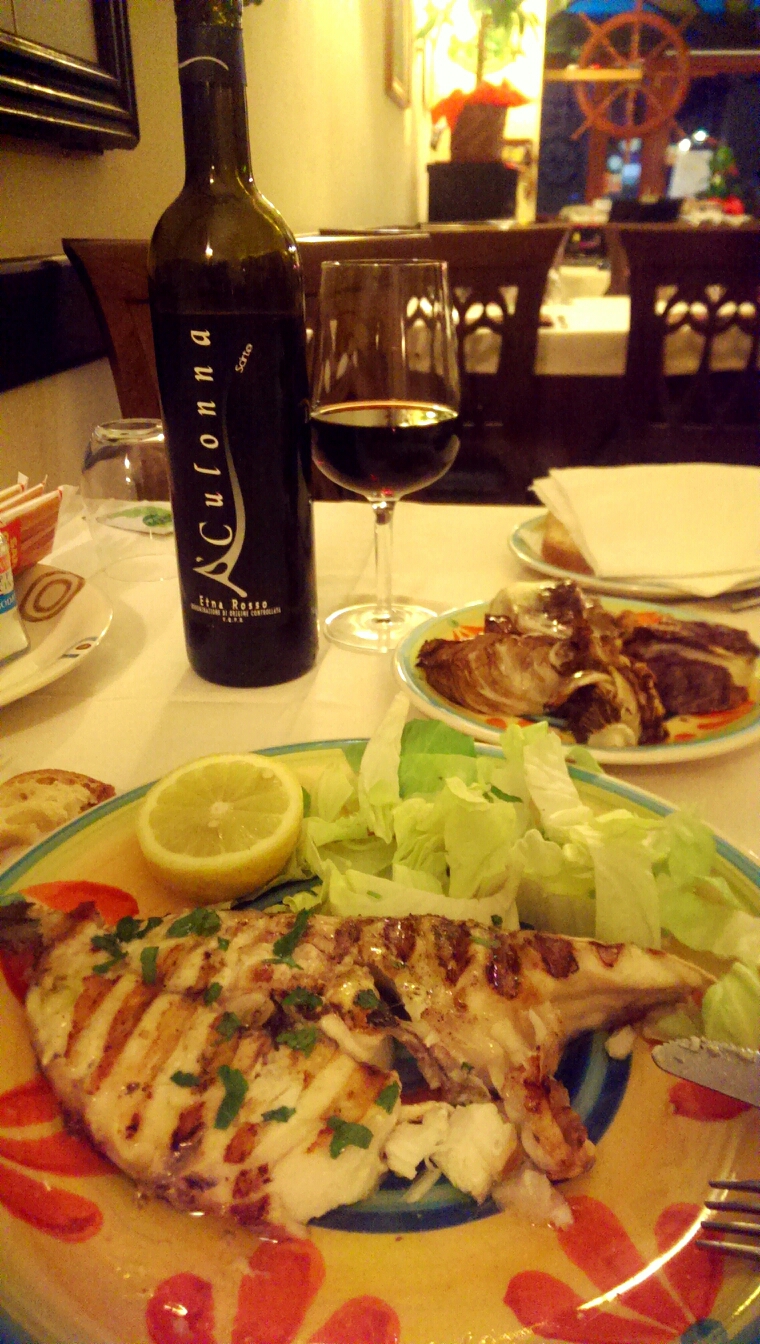
Un bel bicchiere di “A Culonna” Etna rosso di Nerello Mascalese di vini Scirto, il vino dell’Etna si sposa ottimamente anche con pesce fresco Cernia alla griglia, radicchio arrosto, la semplicità dei sapori, la cura in cucina di Antonella Risini e con gli amici del Victor’s restaurant a Letojanni…
leggi tutto
A tasting of Etna wines –winenous–
A tasting of Etna wines
Ben (that’s Benjamin Spencer of Etna Wine Lab) had just shown us around the palmento at our hotel, and ferried us the short distance to the restaurant Da Antonio for this tasting. It was from one palmento to another. This restaurant used to be in the town of Randazzo, but had recently moved a few miles out into the country. The tasting was upstairs in the old treading area of the beautifully restored palmento, where we met Valeria Càrasto, also of Etna Wine Lab, who arranged this tasting for us. They did receive payment, but in the interests of full disclosure I should add that I very much doubt that what we paid covered the full cost of the event.

We soon got stuck into the pleasant task of tasting wines from the Etna region, starting with the whites. I finished up with 20 tasting notes, so a bottle must have arrived after the initial line up shown above. The tasting table picture was taken with permission from Valeria’s Facebook page and shows, left to right, Ben, my wife and me. The only thing missing from the picture, but not from the event, was the wonderful finger-food provided by Da Antonio, and the wine producers.


Towards the lunchtime, and I think about halfway through the tasting, producer representatives arrived to say hello to us and meet each other – owners and family members of the smaller producers, and winemakers and marketers from the larger ones. Left to right above are Mariarita Grasso, and Franco Calcagno with Valeria Càrasto.


And here is agronomist Giovanni Marletta with Alberto Falcone holding one of his bottles, and Patricia Tóth, winemaker at Planeta, in thoughtful discussion with Ben.


Finally, Ben with Agatino Failla, responsible for export sales at Benanti, and Valeria Franco and Giuseppe Scirto. We also met Antonino Destro, Peter Wiegner, and Irene Badalà, but sadly they will have to remain pictureless, and is as far as I can tell Irene does not have a website.
As ever, please do not take my tasting notes too seriously – they show my impressions on the day, no more no less – I hate to be seen as a judge of wines, but also feel I want to communicate my impressions. Looking back on my notes I see that there are a lot more high scores than usual, which is measure of how I enjoyed the day, but which I fear might be a bit unfair to wines elsewhere in my blog. The prices are approximate UK retail, or my best guess in the cases where they are not available over here.
Saxanigra, Vino Spumante, Metodo Classico, Brut, Destro, 2010, 12.0%, £20.00
This is 100% Nerello Mascalese, with 36 months on lees. Pale greenish straw. Very persistent surface foam, whose appearance reminded me of Asti. But appearance was the only similarity to Asti. This was fresh, dry, and had high acidity. Intense minerality and fruit. I think I would probably drink this now, but it could have aging potential ****
Isolonuda, Etna Bianco DOC, Destro, 2013, 12.5%, £13.00
Carricante, with some Carraratto. Pale straw. Intense fruit, and with a distinctive spice. Clove perhaps? Medium acidity. Dry, intense, viscous. Excellent length. Drink now****
Mari, di Ripiddu, Etna Bianco DOC, Filippo Grasso, 2011, 12.5%, £13.00
Carricante, with some Carraratto, 50% from Milo. Medium gold. Don’t get a lot on the nose. Medium acidity. Dry, with citrus fruit. Thought I detected oak, but there is none! Excellent length. Drink now ****
Eruzione 1614, DOC, Sicilia Planeta, 2013, 14.0%, £14.00
Carricante and 5% Riesling. Medium gold. Again, that spicy note that could be clove. Medium acidity. A little off-dry I think? Citrus. Excellent length. Drink now ***
Dayini, Bianco, Etna DOC, Terre di Trente 2012, 12.5%, £18.00
Carricante and Minnelo. Medium gold. Reductive and farmyard – but in a good way. Medium acid. Dry, elegant, complex and subtle. Drink now *****
Wiegner, Elisena, Sicilia IGT, 2011, 13.0%, £15.00
Fiano. Medium gold. Dumb on the nose. Medium acidity. Dry, elegant, some complexity. Something about this wine that I find difficult to characterise. Drink now *****
Quantico, Etna Bianco DOP, Giulemi, 2012, 13.5%, £25.00
Carricante and Cateratto. Biodynamic, natural, and I’ve heard they do weird stuff with electromagnetism in the vineyards (which I am sure someone else told me was bad for cosmic energy, but what do I know). Medium gold. Nose is complex and had a sweet nature. Medium high acidity. Definitely dry on the palate. Hugely intense. Apples. Drink now *****
Eruzione 1614, Nerello Mascelese, Sicilia IGT, Planeta, 2011, 13.5%, £14.00
Pale ruby garnet. Slightly reductive red fruit. Medium low acid. Medium low tannin. Drink now **
Treterre, Sicilia IGT, Rosso, Wiegner, 2009, 14.0%, £15.00
Nerello Mascalese. Medium garnet. Rasiny red fruit. Medium high acid. Medium tannin. Raisiny, but fresh. Intense. Drink now ****
Arcuria, Etna Rosso DOC, Calcagno, 2011, 14.0%, £17.00
Arcuria is the Contrada name. 2010 was the drier vintage in this Contrada, but 2011 is generally better. Medium garnet. Dumb. Spicy red fruit. Medium high acid. Medium tannin. Good sweet intense fruit. Drink now or keep ****
Arcuria, Etna Rosso DOC, Calcagno, 2010, 13.5%, £17.00
More tawny than the 2011. More intense, and spicier, but otherwise quite similar. Good intense fruit. Drink now or keep *****
Capu, Chiurma, di Ripiddu, Etna Rosso DOC, Calderara Sottano, Filippo Grasso, 2011, 14.0%, £18.00
Intense garnet. Smoky. Reductive. Medium acidity. Medium high tannin. Big, powerful and intense. Sweet fruit. Needs several years *****
Etna Rosso DOC, Azienda Agricola Irene Badalà, 2012, 14.5%, £20.00
From a 3ha vineyard. The wine is made at Terre Nere. Intense ruby garnet. Intense sweet perfumed fruit. Medium high acid. High tannin. As nose. Very attractive wine. Needs more time ******
A’Culonna, Scirto, Etna Rosso DOC, 2010, 14.5%, £30.00
Medium pale garnet. Fresh red fruit. Medium acid. Medium tannin. As nose. Delicate and elegant. Another great wine. Drink now or keep ******
Nerello Mascalese, Sicilia IGT, Terre di Trente, 2008, 14.0%, £21.00
Medium pale garnet. Reductive. Medium acidity. Medium high tannin. Metallic finish. Maybe will come round with time, but I find this difficult to like now **
Quantico, Etna Rosso DOP, Giulemi, 2012, 13.0%, £25.00
Pale garnet. Gentle nose with blackcurrant. Medium high acidity. Medium low tannin. Excellent length. Drink now, but no hurry *****
Aitho, Etna Rosso DOC, Azienda Falcone , 2012, 13.5%, £15.00
3ha South-West of Etna, and high altitude vineyard. Medium pale garnet. Reductive, perhaps. Fresh aromatic fruit. Medium high acid. Medium high tannin. Needs more time***
Rosso di Gulfa, Etna Rosso DOC, Feudo di Gulfa, 2011, 14.0%, £25.00
South-West of Etna. Medium pale ruby garnet. Intense fresh fruit. Medium high acid. Medium tannin. A little raisiny, but still refreshing. Excellent length. Spice. Good now, but will improve *****
Serra delle Contessa, Etna Rosso DOC, Benanti, 2004, 14.0%, £31.00
Prephylloxera. Nerello Mascelese and approx 20% Nerello Cappuchio. Medium pale garnet. Intense, mature, complex, aromatic. Medium high acid. Medium high tannin. Intense. Great now, but still scope for improvement ******
Pietra Marina, Etna Bianco Superiore DOC, Benanti, 2009, 12.5%, £31.00
Pale greenish gold. Complex, and not too intense on the nose. Medium acidity. Dry. Intense, and complex in ways I find difficult to describe. Good now, but will keep for several more years ******
For those that know Benanti maybe it is no great surprise that I liked their wines so much, especially considering they had the advantage of a fair amount of bottle age over the others at the tasting. But I was really impressed by them, even though they were numbers 19 and 20 of a 20 wine tasting. The white was even tasted “out of order”, after the reds.
My other two favourites (given all the caveats already expressed) were a couple of wines less familiar to UK drinkers. They are pictured below to help you recognise them should you get a buying opportunity. The Scirto A’Culonna was difficult for me to adequately describe, but had a quiet elegance that I really liked. While the Irene Badalà was very different, being very astringent and with intense and good quality fruit. I really didn’t think the Badalà was ready for drinking now, but I took a bottle home with me and look forward to trying it again in several years time.


After my Etna trip, and this tasting in particular, I certainly understand Etna wines a lot better than before, but I still don’t think I have a great handle on the major grape varieties of Carricante and Nerello Mascelese. Indeed I am beginning to doubt there is much of a handle to grasp. I view them both as being like Chardonnay, in the sense that they are good quality, but seem to be able to adopt a broad variety of styles, but do not have easily recognised aromatics. The only style that I have not encountered in Etna wine is over-ripe flabbiness – they all have good structure, even reds with raisiny notes. Where the comparison with Chardonnay breaks down is in the underlying cause of style variation. That is, I suspect that the Etna varieties are more similar to Riesling and Pinot Noir in their ability to express terroir, if not the distinctiveness of their aromas. I would be interested to hear other views on that subject. I have certainly seen Nerello Mascelese aromatics compared to Pinot Noir and Nebbiolo, but I am personally not convinced.
Finally, I’d like to say a big thank you to Ben and Valeria of Etna Wine Lab. They are great people, very knowledgeable, and responded very positively and flexibly to my requests for help to become better acquainted with Etna wines.
Menzionati su Decanter magazine di febbraio… Molto orgogliosi… #viniscirto
PDF Etna-1 Etna-2 Etna-3 Etna-4
Vini Scirto ha ritwittato
@Viniscirto and some more really good traditional and even organic #Etna #wines mentions #thatswhySicily http://fb.me/2MOXkwYA2
Vini Scirto dell’Azienda Agricola GiuseppeScirto
L’idea di creare , Vini Scirto dell’Azienda AgricolaGiuseppe Scirto nasce dalla passione per la vigna e per il vino e dalla voglia di conservare la tradizione fondendola con l’innovazione. E’ una piccola e giovane azienda siciliana che ha appreso dalle generazioni passate l’amore e la volontà per questo lavoro. Continua la lettura di Vini Scirto dell’Azienda Agricola GiuseppeScirto
I Prodotti
Vini Scirto


Show Cooking “GAMBERO ROSSO”, cucina dei territori, “Sagra dei Tirrimmuliri”
https://albaretna.wordpress.com/2014/12/08/2104/
Show Cooking del GAMBERO ROSSO e Città del Gusto, cucina dei territori e non spettacolo.
La “Sagra dei Tirrimmulliri” ha ospitato un evento di gusto, evento culinario di prestigio, rivolto a tutti gli interessati ad approfondire la tematica della connessione tra cibo e territorio.
Questa è Randazzo questo è il territorio ricco dell’ Etna, questa è bella Sicilia, da gustare, conoscere, visitare, scoprire e imparare.
Wine di Vini Scirto, bianco di uve Carricante e Minnella “Don Pippinu” oltre al mio preferito “A Culonna” di Nerello Mascalese e Cappuccio” del vulcano best areaPassopisciaro Castiglione di Sicilia.
A Culonna red Etna wine & San Giorgio e il Drago tipical sicilian recipes restaurant.

http://albaretna.com/2014/08/16/1637/
Questa sera la cucina tradizionale della signora Paolina il top delle ricette tipiche della Sicilia, nello specifico della nera lavica architettura di Randazzo, alla trattoria San Giorgio e il Drago, con Daniele, Pippo e lo staff, attenti, cordiali e ospitali il tutto in atmosfera medievale.
Un bel Nerello Mascalese vino rosso dell’Etna “A Culonna” Vini Scirto, eh…
Cosa vuoi di più dalla vita… Un vulcano?
I bianchi dell’Etna, le immagini. Una serata all’insegna del divertimento -
Pubblicato il 28 Marzo 2014
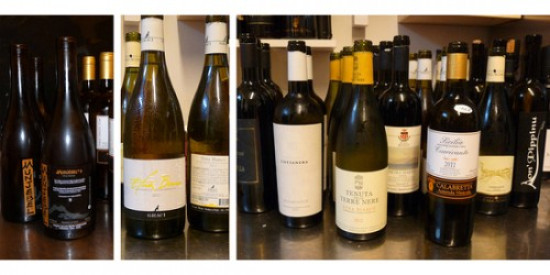
Tutto l’articolo… http://gustodivino.it/home-gusto-vino/i-bianchi-dell-etna-le-immagini-una-serata-allinsegna-del-divertimento/massimiliano-montes/9144/
Massimiliano Montes commenta:
28/03/2014 ore 14:58
Alcune menzioni d’onore:
– sicuramente la Minnella 2003 di Benanti, un grande vino
– il Carricante di Scirto, Giuseppe, giovane vignaiolo da famiglia storica di Passopisciaro, ha tirato fuori un gran bel vino.
– L’Etna Bianco di Graci, 70% carricante 30% catarratto, dalla personalità forte e coinvolgente
– Ultimo ma non ultimo, lo Schwarzenneger dell’Etna, il demolitor, il grande Munjebel bianco 2012 di Frank Cornelissen!
– See more at: http://gustodivino.it/home-gusto-vino/i-bianchi-dell-etna-le-immagini-una-serata-allinsegna-del-divertimento/massimiliano-montes/9144/#sthash.2erXkqRJ.dpuf
Vini Scirto. Una storia (Valeria Càrastro)
Vini Scirto. Una storia
Giuseppe Scirto aveva 5 anni quando per la prima volta, all’inizio delle vacanze estive, la sua mamma lo accompagna con la sua valigia alla stazione della circumetnea di Randazzo affidandolo al bigliettaio. Pochi chilometri sul trenino a gasolio che tutt’oggi lentamente viaggia intorno al vulcano per collegare i piccoli centri etnei. Il bigliettaio della circumetnea sa che Giuseppe deve scendere a Passopisciaro, lì c’è Don Pippino che aspetta il nipotino per trascorrere le giornate estive insieme nella vigna. Fino alla vendemmia Don Peppino, con l’aiuto di Giuseppe, tutti i giorni vanno in vigna e poco al giorno, nel tempo scandito dalla sirena, portano avanti i lavori di stagione. Dopo la sirena delle 16.30 il riposo diventa produttivo: si rientra in casa, e ripuliti dalla finissima polvere della vigna ci si ritrova alla piazzetta di Passopisciaro, nodo nevralgico del traffico locale. E’ il luogo in cui il viandante sceglie la direzione: Messina, Troina o Catania. Le direzioni sono incise su tre lastre di pietra bianca incastonate su una colonnina di nera pietra lavica ” ‘a culonna”, è così che la chiamano a Passopisciaro. La posizione è strategica. Qualunque sia la meta del viaggio il passaggio dalla “Culonna” è passaggio obbligato, come obbligata diventa la sosta del viandante per comprare ” ‘u vinu d’o Passupisciaru “. Era proprio alla Culonna che Don Peppino e Giuseppe passavano i pomeriggi a riposare la schiena e a vendere il vino ai passanti. All’ombra delle case in pietra lavica, seduti su un gradino i caldi pomeriggi di apparente ozio, rappresentavano la commercializzazione del prodotto del lavoro dell’anno prima.
Dopo la scomparsa di Don Peppino il percorso era naturalmente segnato. Giuseppe continua a lavorare la vigna come ha imparato dal nonno, alla colonna adesso va a bere l’acqua, e il suo vino, bianco e rosso, lo imbottiglia. Il nome bianco che si legge in etichetta è “Don Pippinu” mentre il rosso si chiama ” ‘A culonna”.
Li ho bevuti. E nel calice ho sentito i profumi intensi di una storia vera; ho visto i colori di una vita semplice, ho percepito la longevità di una cultura tramandata attraverso i gesti;
Accanto a Giuseppe adesso c’è Valeria, che lo segue in vigna e lo supporta tutti i giorni. A Valeria mancano pochi esami per completare i suoi studi in lingue, ma la sua priorità oggi non è la laurea ma stare in vigna accanto a Giuseppe. Insieme lavorano le vigne del nonno, vigne di oltre 80 anni coltivate ad alberello e suddivise in piccoli appezzamenti sparsi fra Passopisciaro e Randazzo. Sperano di vendere tutto il vino Giuseppe e Valeria, perché non sopportano di vedere vigne abbandonate e non gestite; vogliono comprarle, “perché sennò è peccato.”
Etna, più che moda, ormai una sicurezza rocciosa! slowine
A Culonna Etna Rosso Doc (Gustodivino)
Pubblicato il 11 Marzo 2013

| di Patrizia Saiola | Un commento |
Sorsi dell’Etna 2013. Mi sposto affascinata tra i banchi degustazione, quando la mia attenzione viene catturata da una coppia di giovani che, vicini, vicini, stanno li un po’ impacciati. Osservandoli si intuisce subito il forte legame che li fa stare così stretti l’uno con l’altra: l’amore.
Lui, Giuseppe Scirto, lei, Valeria Franco, insieme custodiscono, allevano e curano dal 2010, la piccola azienda agricola sulle pendici dell’Etna, Faro Giuseppina, ereditata dalla nonna di Giuseppe. L’azienda è a Passopisciaro, frazione del Comune di Castiglione di Sicilia. I vigneti si trovano in due contrade, Contrada di Mezzo e Contrada Porcaria, ad un altitudine di 650m s.l.m.
Passopisciaro è una delle contrade più note, da cui nascono alcuni tra i migliori vini del vulcano. L’altitudine, le significative escursioni termiche, unite alle correnti ventose che lambiscono il pendio, favoriscono al meglio lo sviluppo delle componenti aromatiche di queste particolari uve. Antiche piante di Nerello Mascalese coltivate ad alberello, ancora oggi tra le migliori forme d’impianto per questa vite, insieme a pochi ceppi di altre varietà autoctone: Nerello Cappuccio, Carricante, Grecanico e Minnella.
Tutte le viti sono allevate senza fertilizzanti chimici e senza pesticidi, la raccolta dei grappoli viene effettuata rigorosamente a mano, già dalla prima settimana di Ottobre. Giuseppe e Valeria, curano personalmente la vigna. Lui sorride mentre racconta di quanto la sua Valeria sia una tipa tosta, non si tira mai indietro davanti alle difficoltà e i sacrifici che la vigna richiede. Bene penso: è forte come la sua “muntagna” anche se l’aspetto è esile.
Vinificano il loro vino con dedizione, “A Culonna”, ovvero la colonna. Chiedo cosa e perché li abbia portati alla scelta di un nome cosi insolito. “A Culonna” è un monumento storico posto al centro del paese di Passopisciaro, datato 1870/80 circa, racconta Giuseppe. In pratica è un antico segnale stradale, che regola uno dei più importanti incroci siciliani. Un obelisco, che ospita tre facciate sulle quali sono scolpite le direzioni stradali, da e per Milazzo, Taormina, Randazzo e Nicosia e la strada statale, Palermo Cerda. Edificato totalmente in pietra lavica, sulla sua sommità, vi era un tempo posto anche un piccolo lampione ad olio per essere maggiormente visibile anche di notte. Per Giuseppe è un ricordo e un punto di riferimento importantissimo, poiché, attorno “a culonna” si svolgeva un tempo, non molto lontano, anche la vita sociale ed economica del paese. I contadini, intorno all’obelisco, si riunivano, dopo il lavoro nei campi, all’imbrunire, per vendere i propri prodotti agricoli e il loro vino. Giuseppe ne è stato spettatore attento, grazie a suo nonno che lo portava con se. Questo è il motivo per cui ha scelto il nome A Culonna, per il suo vino.
E’ prodotto con Nerello Mascalese e una piccola percentuale di Nerello Cappuccio e rientra nel disciplinare “Etna Rosso Doc”. Fermenta con lieviti indigeni in vasche di acciaio, successivamente matura in botti grandi di rovere di secondo passaggio. Sono appena 3000 bottiglie il loro piccolo tesoro, e racchiudono in loro tutta la turbolenza e la territorialità dell’Etna. Ho assaggiato il 2011. E’ rosso rubino scarico, vivace e brillante. Complesso al naso, stuzzica con frutta rossa e carnosa, sono fragoline e amarene, ma tra tutte spicca la verve del melograno. Come un iniziale e scomposto accordo sinfonico, erba, fiori e spezie dolci formano vorticose spirali odorose gradevolissime al naso, giunge infine un’intransigenza di stampo balsamico che chiude con eleganza. In bocca è intenso, fresco e di congrua mineralità. Sostenuto da una fittissima trama tannica che persiste piacevolmente. Intrigante.
Giuseppe e Valeria hanno appreso dalle generazioni passate l’amore e il rispetto per la vigna, e oltre il vino producono anche dell’ottimo olio di oliva.
Vini Scirto
Az. Agr. Faro Giuseppina
Via Panebianco,13 Passopisciaro
Castiglione di Sicilia (CT) 95030
Email: viniscirto@gmail.com
– See more at: http://gustodivino.it/vino/a-culonna-etna-rosso-doc/patrizia-saiola/2619/#sthash.DTZxMcW5.dpuf
